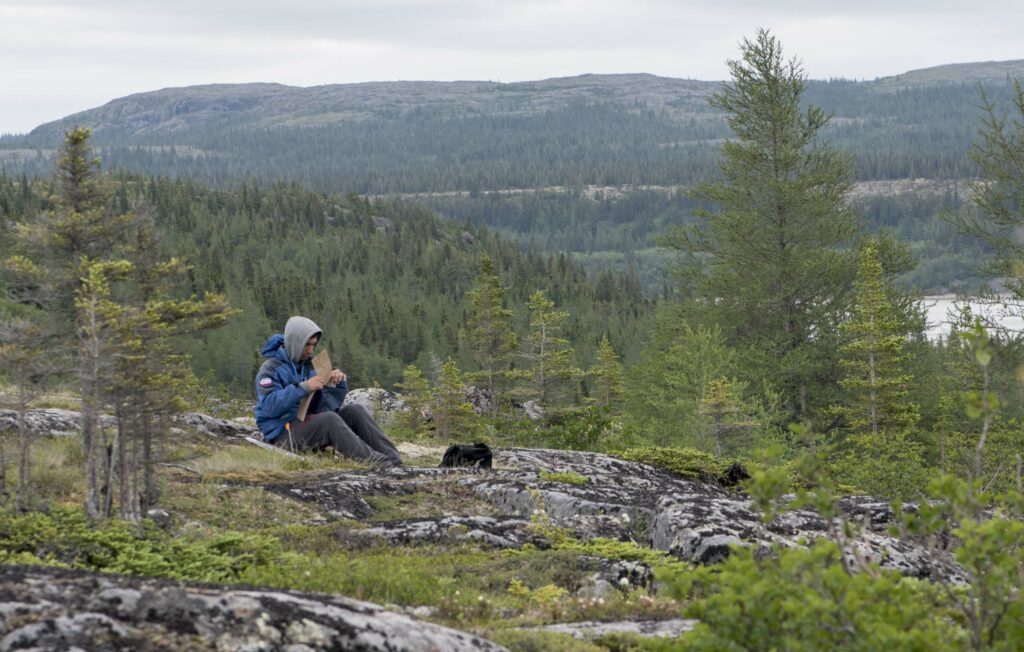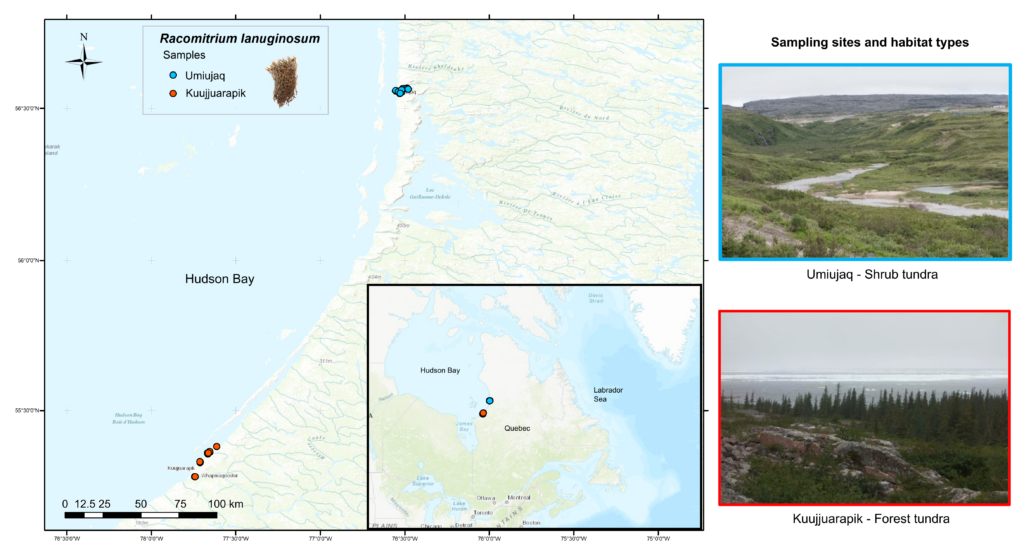Exciting news about our research regarding moss-symbiosis. Moss-bacterial communities have a core microbiome and bacteria recruited from environmental sources, and symbiotic N2-fixing bacteria contribute to the N budget in northern ecosystems through biological nitrogen fixation. This process may be affected by the abundance of diazotrophs and moss nutrient content.
As part of his thesis research, Dennis Escolástico and collaborators (Jean-Philippe Bellenger, Charlotte Blasi, Nicolas Derome) investigated the bacterial and diazotrophic communities associated with the moss Racomitrium lanuginosum in different habitat types using amplicon sequencing of the bacterial 16S rRNA and nifH genes.

We found that moss microbial communities between tundra types hosted similar bacterial diversity but differentially abundant groups and characteristic microbial interaction patterns. The core microbiome of Racomitrium lanuginosum is composed of bacteria strongly associated with northern mosses with no significant recruitment from the soil. The relative abundances of dominant diazotrophs are significantly correlated with acetylene reduction rates. In contrast, the moss nutrient content did not significantly drive N2-fixation. The proteobacterial genera Azorhizobium and Rhodomicrobium represent newly reported bacteria associated with N2-fixation rates in the tundra. This study identified critical bacterial groups related to moss-bacterial symbiosis and N2-fixation in the forest-tundra transition zone, a changing environment susceptible to climate warming.

study. The inset map indicates the location of the two sampling sites
in the Quebec province, Eastern Canada, including forest tundra in
Kuujjuarapik and shrub tundra in Umiujaq. Photos of each habitat are
presented on the left side.
The complete article is found in the following link.